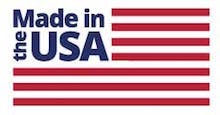Kevlar® vs Nomex®
Of all the high-performance fibers used to manufacture specialty fabrics, the name Kevlar® is likely the most recognized by textile insiders and laypersons as well.
Developed by Stephanie Kwolek at DuPont® in 1965, Kevlar is an extremely strong, heat-resistant synthetic fiber, first used commercially in the early 1970s as a replacement for steel reinforcement in racing tires – though many associate the name with its ballistic protection applications, as with bullet-proof protective gear.
Another of DuPont’s® versatile and widely used performance fibers/brands is Nomex®. Developed in the early 1960s by DuPont and first marketed in 1967, Nomex® was based on the discoveries of DuPont® scientist Wilfred Sweeny. As with Kevlar®, Nomex® has several key characteristics that make it an excellent and popular choice for numerous personal-protection equipment and clothing applications.
Both Kevlar® and Nomex® are examples of aramid fibers; however, while Nomex® is an example of a meta variant of the aramids, Kevlar is of the para-aramid variety. Unlike Kevlar, Nomex strands cannot align during filament polymerization and have less strength: its ultimate tensile strength is 340 MPa (megapascal), whereas Kevlar is 3.620 MPa. However, it has excellent thermal, chemical, and arc-flash resistance for a polymer material.
Aramids
Aramid (aromatic + amide) is a polymer material which has many amide bonds as repeating units. Therefore, we can categorize it as a polyamide. It has at least 85% of its amide bonds attached with aromatic rings. There are two main types of aramids, categorized as meta-aramid, and para-aramid and each of these two groups have different properties relating to their structures.
Kevlar® is an example of a para-aramid fiber, while Nomex® is considered meta-aramid. The key difference between meta and para-aramid is that meta-aramid has as semi-crystalline molecular structure, whereas para-aramid is crystalline.
Para Aramids (Kevlar®)
Para aramids – such as Kevlar® – a type of polyamide, are produced and known for their high strength and excellent heat/flame resistance. The production method for this material is dry-jet wet spinning and comes as either spun, or continuous filaments.
Meta Aramids (Nomex®)
Meta aramids – like Nomex® – are also a variety of polyamide having high heat/flame resistance. Generally, this material is manufactured via wet spinning. Other important performance features of meta-aramids are abrasion resistance and resistance towards chemical degradation.
As with para-aramids, there are two different forms of meta-aramid fibers – spun and continuous filament. The spun form is useful in the manufacture of clothing and other sewing applications, due to its softer “hand” (feel/touch), while the continuous form is useful in reinforcement applications.
Primary Differences Between Meta and Para-aramid Yarns
Meta-aramids, as Nomex®, are known for their temperature, chemical (though this can vary with specific substances), and abrasion resistance. They have a tenacity of about 5.6g/den (grams /denier) and can withstand stress during fire exposure and high temperatures.
Para-aramids, like Kevlar®, have incredible tensile strength. This is due to the higher degree of crystallinity which increases the fiber’s strength. Compared with meta-aramids, they are manufactured with the significantly higher tenacity of 23g/den.
*Note: Tensile strength is simple a measure of maximum force attained in breaking a fiber however, tenacity is a measure the same force in relation to the linear density of the fiber or yarn.
Below are some key performance specifications of these fibers:
| Meta-Aramid | Standard Tenacity Para-Aramid | High Modulus Para-Aramid | |
| Typical filament size (dpf) | 2 | 1.5 | 1.5 |
| Specific Gravity (g/cm3) | 1.38 | 1.44 | 1.44 |
| Tenacity (gpd) | 4-5 | 20-25 | 22-26 |
| Initial Modulus (g/dn) | 80-140 | 500-750 | 800-1000 |
| Elongation @ Break (%) | 15-30 | 3-5 | 2-4 |
| Continuous Operating
Temperature (F) |
400 | 375 | 375 |
| Decomposition
Temperature (F) |
750 | 800-900 | 800-900 |
Unlike other materials and fibers, that may require coatings and finishes to enhance their heat and /or flame protection, Kevlar® and Nomex® fibers are inherently flame-resistant and will not melt, drip, or support combustion. In other words, the thermal protection offered by Kevlar® and Nomex® is permanent — its superior flame resistance cannot be washed out or worn away. Materials that must be treated, in order to improve their fire-resisting performance (and whose protection may wane with wash and wear exposure) are known as “fire retardant.” Those with the superior inherent and permanent protection (i.e., Kevlar®, Nomex®, etc.) are referred to as “fire resistant.”
This superior heat and flame-resisting ability allows these fibers – and the textiles produced from them – to meet many industry standards industry standards that other materials cannot.
Kevlar® and Nomex® are also heavily favored by manufacturers of clothing and equipment utilized by the electrical-utility and welding industries, specifically for their ability to endure arc-flash strikes. Arc flash is a phenomenon where a flashover of electric current leaves its intended path and travels through the air from one conductor to another, or to ground. The results are often violent and when a human is in close proximity to the arc flash, serious injury and even death can occur.
Unlike Kevlar®, Nomex® strands cannot align during filament polymerization, resulting in the aforementioned lower strength. However, with its excellent thermal, chemical, and arc-flash resistance, the semi-crystalline structure of Nomex® translates to a unique and optimal balance of fiber integrity and softness of hand that make it an ideal choice for protective clothing applications.
While Kevlar® shares the heat/flame and arc-flash resistance of Nomex®, at 5 times the strength-to-weight ratio of steel, it is more often suited to product solutions that require greater tensile and tenacity performance than its DuPont® cousin.
Both fibers are utilized (independently and in combination) for a wide array of products in fields such as:
- Firefighting
- Defense
- Forging and Smelting
- Welding
- Electrical and Utility
- Mining
- Racing
- Aerospace and Outer space
- Refining and Chemical
- And many others
As with all performance high-performing fibers, both Nomex® and Kevlar® have their weaknesses and limitations. For example, both will eventually degrade in performance and in color, with prolonged expose to UV light. Additionally, as porous materials, they will absorb water/moisture, and will gain weight as they take on water. Therefore, when evaluating a fiber(s) for a specific application, it is always crucial to take into consideration all potential actions, environments, and duration to which the end product will be exposed.
The OTEX Research & Development and Quality Assurance teams are experts in fiber selection and textile design/testing. They will be thrilled to help you determine what will be the best performance textile for your specific needs. Give us a call!



